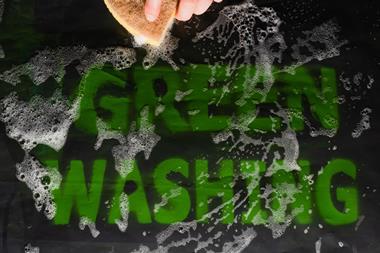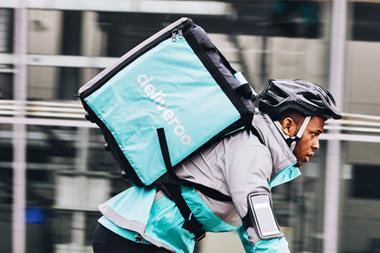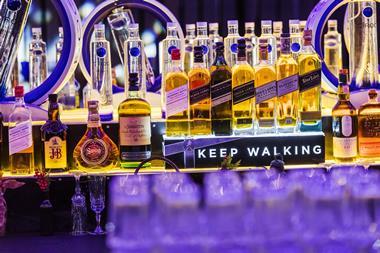A debate on alcohol pricing has revealed differing opinions on the best way to implement a ban on below-cost alcohol sales. Anna-Marie Julyan reports
Bringing the drinks industry, government and health professionals together to look at how responsibility for tackling the country's binge-drinking problem could be shared was bound to raise more questions than it answered.
But at least last week's Westminster Food & Nutrition Forum seminar on alcohol was an attempt to kick-start the discussion, even if only The Co-op Group, M&S and Waitrose were there to represent the supermarkets.
The government has pledged to review alcohol tax and pricing to include a ban on the sale of alcohol 'below cost price'. Public consultation has already started and will report back this autumn.
What impact any of it will have on consumer behaviour is anyone's guess. Intervention to control obesity through food labelling has already caused a big headache for the industry with little evidence so far of tangible public health benefits. And there is consensus, even in government, that there is a limit to what a stick approach can achieve.
"We cannot frogmarch people out of the off-licence," Anne Milton, Under Secretary of State for Public Health, admitted at the conference.
Government health watchdog the National Institute for Clinical Excellence also made clear its opinion: that a minimum price per unit would be the most effective strategy. Professor Mike Kelly, its director, said the institute was being pragmatic, claiming a below-cost ban was beset with technical difficulties.
Nonetheless, the government is continuing to explore the idea of a ban and, as The Grocer revealed this month, is weighing up four definitions of cost.
As the seminar revealed, opinion is divided over which option is most suitable. Amid all the confusion, one thing is certain: although there will be major changes in the drinks aisles, it will be the consumer not the government who will determine their impact.
This simple and transparent definition has been supported by some of the leading supermarkets and many in the alcohol industry, and was backed at the conference by Diageo corporate social responsibility manager Mark Baird.
But, while it would be relatively easy to implement, the limited amount of alcohol sold below duty plus VAT would mean its impact was small, admitted Seymour Fortescue, chairman of industry body The Portman Group.
Even Brigid Simmonds, chief executive of the British Beer and Pub Association, said such a ban would not make "a bit of difference".
"Something along the lines of excise duty and VAT plus X% for beer, Y% for wine and Z% for spirits may be the way forward," said Fortescue.
He pointed out, however that sorting out the details would be a huge job, given that the production costs of whisky and vodka, for example, differ wildly.
Baird, meanwhile, questioned how the production costs of a giant such as Diageo could be compared with those of a microbrewer.
The number of SKUs and retailers would make the administration costs of this huge, and the chances of it being adopted are unlikely, given the government wants to minimise regulation, said Baird.
Allowing retailers to collude would require the government to exonerate them from competition law. This could equate to minimum pricing, which would affect excessive drinkers, who tend to migrate towards the cheapest alcohol, claimed Kelly.
A minimum price per unit would benefit supermarkets at the expense of responsible drinkers, especially poorer ones, said Fortescue.
Proposals to the alcohol taxation and pricing review can be submitted at hm-treasury.gov.uk/alcohol_taxation.htm.
Bringing the drinks industry, government and health professionals together to look at how responsibility for tackling the country's binge-drinking problem could be shared was bound to raise more questions than it answered.
But at least last week's Westminster Food & Nutrition Forum seminar on alcohol was an attempt to kick-start the discussion, even if only The Co-op Group, M&S and Waitrose were there to represent the supermarkets.
The government has pledged to review alcohol tax and pricing to include a ban on the sale of alcohol 'below cost price'. Public consultation has already started and will report back this autumn.
What impact any of it will have on consumer behaviour is anyone's guess. Intervention to control obesity through food labelling has already caused a big headache for the industry with little evidence so far of tangible public health benefits. And there is consensus, even in government, that there is a limit to what a stick approach can achieve.
"We cannot frogmarch people out of the off-licence," Anne Milton, Under Secretary of State for Public Health, admitted at the conference.
Government health watchdog the National Institute for Clinical Excellence also made clear its opinion: that a minimum price per unit would be the most effective strategy. Professor Mike Kelly, its director, said the institute was being pragmatic, claiming a below-cost ban was beset with technical difficulties.
Nonetheless, the government is continuing to explore the idea of a ban and, as The Grocer revealed this month, is weighing up four definitions of cost.
As the seminar revealed, opinion is divided over which option is most suitable. Amid all the confusion, one thing is certain: although there will be major changes in the drinks aisles, it will be the consumer not the government who will determine their impact.
This simple and transparent definition has been supported by some of the leading supermarkets and many in the alcohol industry, and was backed at the conference by Diageo corporate social responsibility manager Mark Baird.
But, while it would be relatively easy to implement, the limited amount of alcohol sold below duty plus VAT would mean its impact was small, admitted Seymour Fortescue, chairman of industry body The Portman Group.
Even Brigid Simmonds, chief executive of the British Beer and Pub Association, said such a ban would not make "a bit of difference".
"Something along the lines of excise duty and VAT plus X% for beer, Y% for wine and Z% for spirits may be the way forward," said Fortescue.
He pointed out, however that sorting out the details would be a huge job, given that the production costs of whisky and vodka, for example, differ wildly.
Baird, meanwhile, questioned how the production costs of a giant such as Diageo could be compared with those of a microbrewer.
The number of SKUs and retailers would make the administration costs of this huge, and the chances of it being adopted are unlikely, given the government wants to minimise regulation, said Baird.
Allowing retailers to collude would require the government to exonerate them from competition law. This could equate to minimum pricing, which would affect excessive drinkers, who tend to migrate towards the cheapest alcohol, claimed Kelly.
A minimum price per unit would benefit supermarkets at the expense of responsible drinkers, especially poorer ones, said Fortescue.
Proposals to the alcohol taxation and pricing review can be submitted at hm-treasury.gov.uk/alcohol_taxation.htm.
















No comments yet